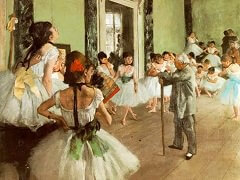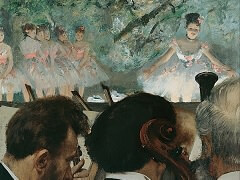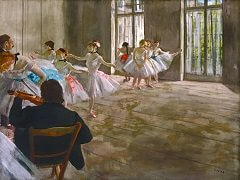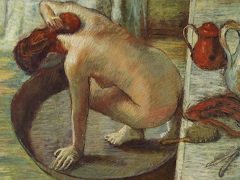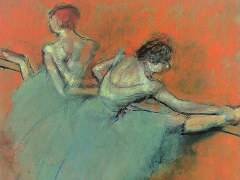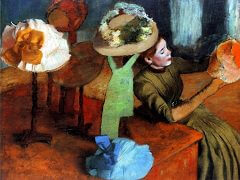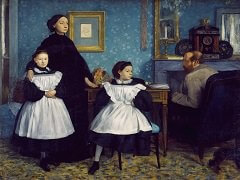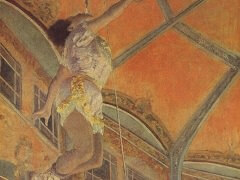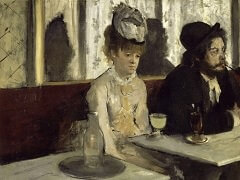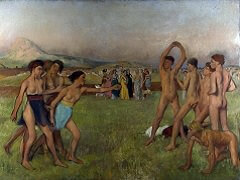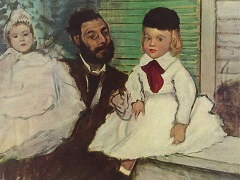Rehearsal Scene by Edgar Degas
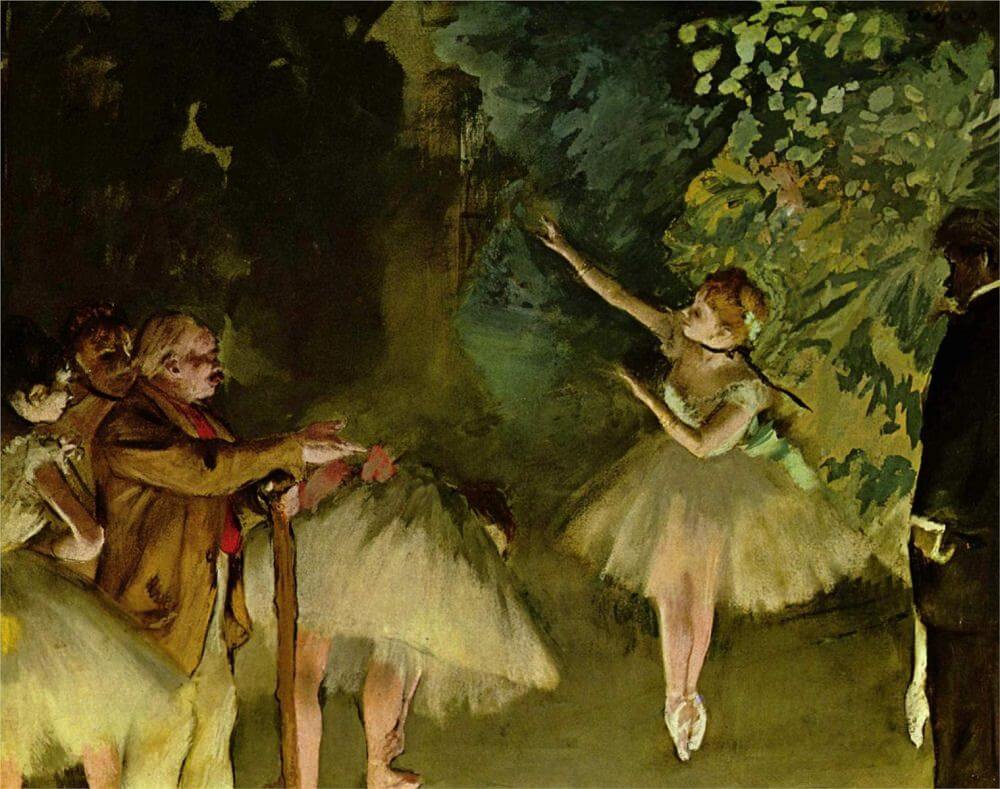
Degas participates in the Modern practice of being a flâneur when he observes the lives, both personal and public, of ballerinas, but as an artist choosing a specific subject matter to zero in and focus on, he is distinguishing himself stylistically through his subject choice. Whereas Monet applied his talents both to people and water lilies, church buildings and haystacks, Degas is more selective, and it is because he can narrow in on a microcosm by doing so.
His ballerina series show not just the world of stage performers of the latter half of the 19th century; it portrays on a more subliminal level the condition of women in the late Victorian Age. Most ballerinas at this time were young, orphaned girls who acquired employment and pay only via the patronage of older men, men who would often require sexual favors from these helpless minors. Many of them were in fact hired as prostitutes alongside their dancing careers, and Degas would have known this quite well. We see evidence of the fact in his paintings when a tall, dark, male figure standing along the sidelines of the scene, looming, ominous, menacing. Painted more as eerie ghost-like figures than as responsible theater owners, these men remain in the shadows, concealed and anonymous, but their presence pervades each of Degas' works with an undeniable aura of haunting disquiet. Suddenly the ballerinas become an object of our sympathy not just for the long, thankless hours spent in exhausting physical strain but for their very situational states. But the pathos to their condition is presented here with more sarcasm and social critique than poignant sincerity.
These subjects are sad, and the artist wants to present them with the object of generating sympathy in the heart of the viewer; but also Degas took pleasure in criticizing the establishment, mocking the hypocrisy of Victorian society's supposed "domesticity" and propriety. Artists like Edgar Degas made it their mission to expose the darker side of the Modern scene through paintings such as these.



